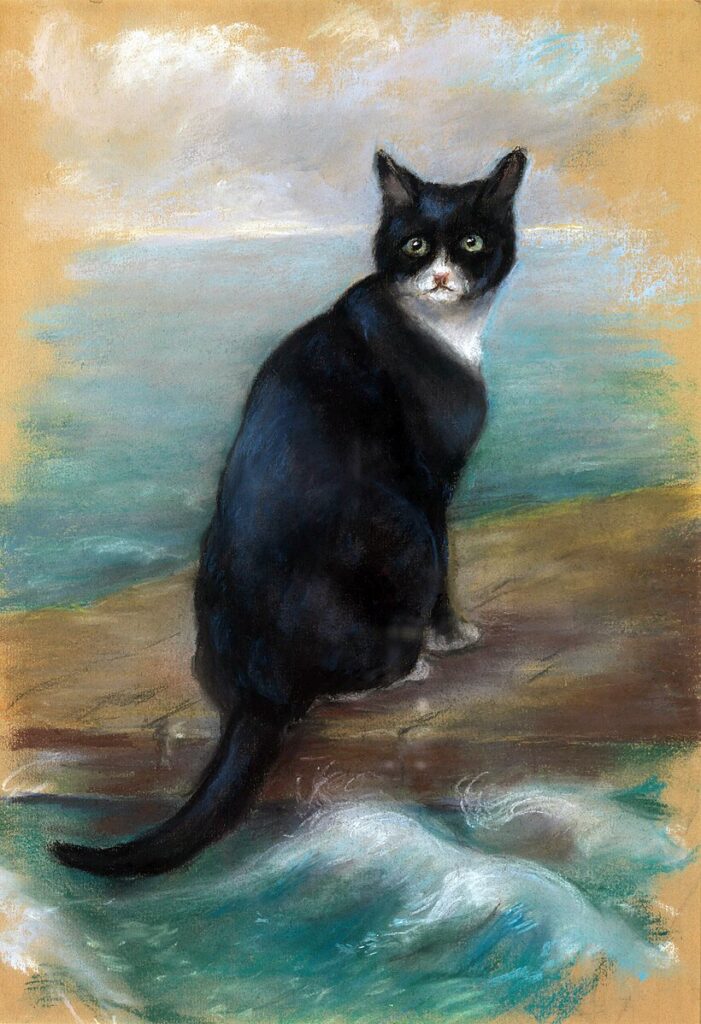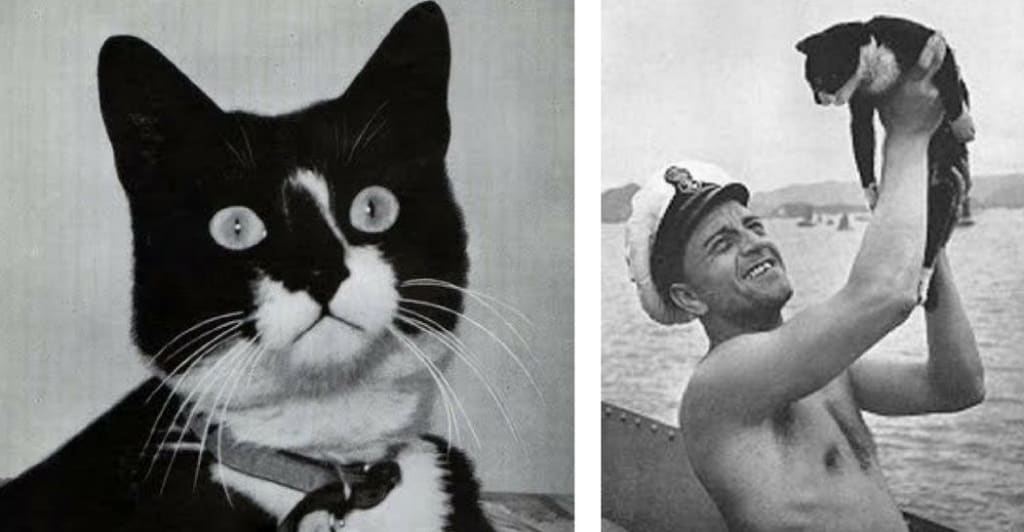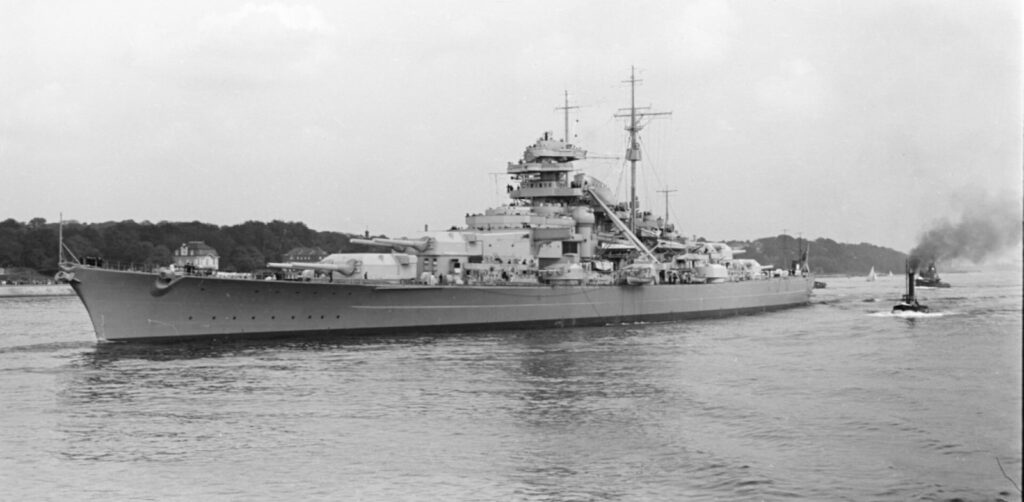Of all the tales of epic battles and heroism of World War II, there’s one that stands out as not only remarkable but undeniably cute – the story of Unsinkable Sam.
Originally named “Oscar”, he got the nickname “Unsinkable Sam” after his harrowing adventures during the war. No, Sam was not a Marine or a sailor, Unsinkable Sam was a black and white ship’s cat whose extraordinary tale of survival has become legendary among the British Royal Navy.
If you’re a history buff with a soft spot for felines then prepare for an adorable story of how one ordinary cat survived the sinking of not one, not two, but three different ships on both sides of the war.

What Was The Role of Cats on Ships?
You may be wondering why, during a time of war, would cats be on warships in the first place. It turns out that they served many roles and were an important part of the crew.
Rodent Control: Ships were usually out at sea for long periods and in that time the ship could become overrun with rats and mice. Mice and rats were a huge problem on ships and could contaminate food, chew through ropes, and spread disease.
The main role of cats on ships was to control the ship’s rodent population. With limited storage space for food, keeping rats and mice at bay was crucial to prevent damage to supplies and maintain hygiene.
Moral Boost: War wasn’t always eventful. Being a sailor could be a lonely life and cabin fever can set in quickly. Having a cat around provided companionship and a sense of normalcy for the crew.
The playful antics and comforting presence of a feline friend could boost morale and relieve stress amidst the harsh realities of war.
Superstitions and Luck: Sailors were known for their superstitions and cats became symbols of good luck on board. Many sailors believed that having a cat on the ship would ensure safe voyages.
Among the superstitions associated with cats was that they could sense impending danger, such as the approach of enemy submarines or aircraft.

The Bismarck Vs. The HMS Hood
Not much is known about Sam before this time. However, it is believed that he was owned by an unknown crewman onboard the Bismarck.
The Bismarck was one of the most powerful and feared warships of its time and the most powerful tool in the German navy. Named after Chancellor Otto von Bismarck, the ship was one of the largest and most powerful battleships ever built.
The Bismarck had a length of over 800 feet and displaced about 50,000 tons of water. It was, with a main battery of eight 15-inch guns. It had formidable armor protection and was designed for long-range naval warfare.
During the Battle of the Denmark Strait on May 24, 1941, the Bismarck engaged the British battlecruiser HMS Hood in a fierce firefight. The Hood, which was considered the pride of the Royal Navy, faced a catastrophic explosion and sank.
Completed in 1920, the HMS Hood was one of the largest and most powerful warships of its time. Armed with eight 15-inch guns in four twin turrets it boasted a top speed of around 31 knots.
At the outbreak of World War II, the HMS Hood was initially assigned to patrol and convoy duties. However, as the German threat increased, it was redeployed for more active roles.
The sinking of the Hood angered the British and sent shockwaves through the Royal Navy and the Allied forces. As the Bismarck limped away, wounded from the battle, the British were determined to avenge the loss of the Hood and eliminate the threat posed by the Bismarck.
The Allied forces launched a hot pursuit of the Bismarck that lasted three days. It culminated in a fierce and long battle that resulted in the sinking of the Bismarck.

The HMS Cossack
After the sinking of the Bismarck, the crew of the British destroyer HMS Cossack was searching the area for survivors. This is when they spotted Sam floating on a makeshift wooden plank amidst the floating debris.
The resilient cat caught the attention of the sailors and they adopted him into their ranks. They gave him the name “Oscar” which is the designation for the letter “O “in the International Code of Signals.
Unfortunately, Sam’s luck was about to take another turn. On October 23, 1941, the HMS Cossack was torpedoed by a German U-boat while on convoy duty in the North Atlantic.
As the HMS Cossack slowly sank, the crew, including Sam, was transferred to The HMS Ark Royal before the Cossack finally succumbed to its injuries and sank.
The HMS Ark Royal
The HMS Ark Royal was one of the Royal Navy’s flagship vessels. Commissioned in 1938, the Ark Royal became renowned for its significant contributions to various naval operations throughout the war.
During the early years of World War II, the Ark Royal was involved in hunting German U-boats, protecting convoys, and launching airstrikes against Axis targets.
During his short time on the Ark Royal, Sam became a familiar and cherished companion to the crew. But bad luck seemed to follow Sam wherever he went.
Less than a month later, on November 14, 1941, the Ark Royal was torpedoed and sunk by a German U-boat. Now familiar with the drill, Sam found a piece of driftwood and clung to it until he was rescued by the
British destroyer HMS Legion and brought to safety.
Retirement
After his 3rd and final rescue, the Royal Navy realized that Sam had had enough of the war and was granted retirement. He was sent to Gibraltar where he lived out the rest of his life in a sailor’s home.
He was officially christened “Unsinkable Sam” and he became a legend among the British Royal Navy.
The Legacy of Unsinkable Sam
The story of Unsinkable Sam has captured the hearts of animal lovers and military enthusiasts alike. Sam’s remarkable journey reflects the camaraderie that often develops between sailors and their animal companions during the hardships of wartime.
His presence brought a touch of comfort and companionship to the sailors on both sides of the conflict.
Unsinkable Sam has become a symbol of the importance of mascots in the military. These animals, whether cats, dogs, or other creatures, often played vital roles in boosting the spirits of military personnel and providing a semblance of normalcy and companionship during long deployments
References
The unlucky cat who survived the dramatic sinking of three battleships in World War II
https://www.historyskills.com/classroom/year-10/unsinkable-sam/
Meet Unsinkable Sam, The Legendary Cat Who Survived Three World War II Shipwrecks
https://allthatsinteresting.com/unsinkable-sam
Unsinkable Sam

